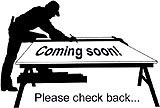Trains, Ships
and Other Stuff
What I do occasionally when I'm not designing and building
castles...
This is NOT an
official Lego site
While
the title isn't as catchy as "Planes, Trains and Automobiles",
here are a few other Lego
projects
that I'm proud of and want to show off!

|
| Naturally
(for you Lego lovers) the inspiration for my train was
Lego's own Santa Fe Super Chief, which first became
available in the Fall 2002 Shop at Home catalog, although the F7A locomotive appeared by itself in the Summer catalog. When I bought my locomotive and first cars with Christmas gift certificates in January 2003. I was surprised how large, and skinny, James Mathis' Lego designs actually were. Naturally I wondered what the real Super Chief looked like...so off to Google I went! |
 |
 |
| The answer
came on Gary Tiritilli's web site (URL above). The Santa Fe decided to upgrade to the Electro-Motive F units, which they purchased in three classes (see just below). |
The engine
itself was followed by a boiler car, designated F7B. The B unit had steam generators to provide air conditioning and heat for the passenger cars. |
 |
| Thus an F7A and F7B would look like this...but the AT&SF went further and more powerful! |
 |
| The 16-Class
Units, numbered 16-36 and delivered from 1946 - 1949, and
the 37-Class Units, numbered 37-47 and delivered from
1949 - 1952, were strung together A-B-B-A, as shown above. Two of the 32 numbered engines were used on each active train. The pair of A units delivered 6000 hp. |
 |
| From 1949
to 1951 the railroad also purchased 17 sets called the
300-Class. They were configured A-B-B with the engine delivering 4500 horsepower. The A units had water tanks in the rear to help supply the boiler cars. |
 |
 |
| My
dormitory side 1 |
The
Dormitiory-Lounge car was followed by three more sleepers, this time a pair of 4-4-2 cars then a single 10-6. |
2. To see my Ships and
others projects, click the link.
Return to the
main castle
page.
Page designed & maintained by Robert Carney